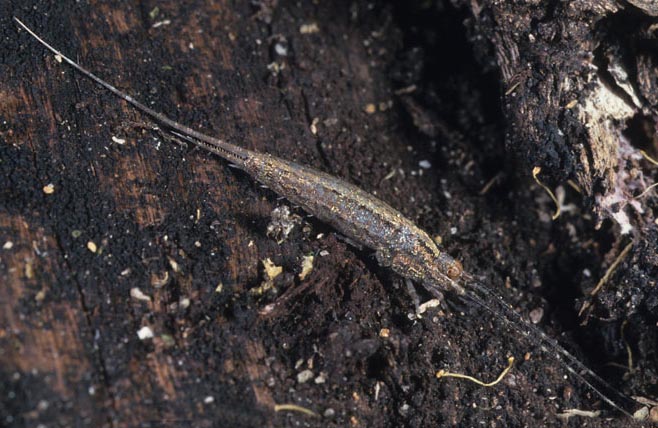|
Order: Archaeognatha (bristletails)
Life
> Eukaryotes >
Opisthokonta >
Metazoa (animals) > Bilateria > Ecdysozoa
> Panarthropoda > Tritocerebra > Phylum:
Arthopoda > Mandibulata >
Atelocerata > Panhexapoda >
Hexapoda
> Insecta (insects)
 |
|
A bristletail photographed on the ground in Cape indigenous evergreen forest.
[photo HG Robertson, Iziko ©] |
Members of this small group of primitive-looking insects look similar to fishmoths
(Thysanura) in that they are elongate, wingless and have three long filaments (a median
caudal filament and two lateral cerci) sticking out the end of the abdomen. However, they
can be distinguished easily in the field from fishmoths by a more dome-shaped, not
flattened, body; the legs do not protrude far from the body and the cerci at the back are
much shorter than the median caudal filament and kept close together along the line of the
body axis, not spread out. They can jump by snapping the abdomen down quickly.
They feed on algae, lichens and vegetable debris. Eggs are laid in batches in
crevices. The larvae are like miniature adults.
Links
Publications
-
Watson, J.A.L. & Smith, G.B. 1991. Archaeognatha. In:
Insects of Australia 2nd
edition, Volume 1. Melbourne University Press, Melbourne, pp. 272-274.
|
